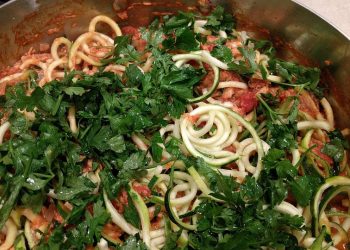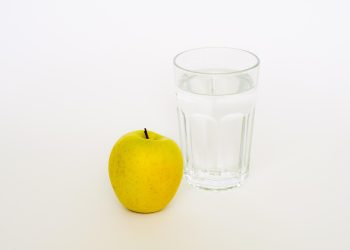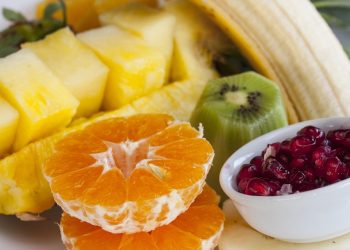Plant-Based Weight Loss: Your Simple Guide
Are you looking for a sustainable and healthy way to lose weight? A plant-based approach might be the answer. It’s not just a fad diet; it’s a lifestyle shift that focuses on consuming whole, unprocessed plant foods. This guide will break down the principles of plant-based weight loss, provide practical tips, and answer frequently asked questions to help you achieve your goals.
What Does “Plant-Based” Really Mean?
The term “plant-based” can be confusing because it’s used in different ways. Here’s a general definition for our purposes:
- Emphasis on Whole, Unprocessed Plants: Fruits, vegetables, whole grains, legumes (beans, lentils, peas), nuts, and seeds form the foundation of the diet.
- Minimizing Animal Products: While some plant-based diets are strictly vegan (no animal products), others may include small amounts of meat, dairy, or eggs. The key is to prioritize plants.
- Avoiding Processed Foods: This includes refined grains, sugary drinks, processed meats, and heavily processed snacks.
Think of it as a spectrum. The closer you move towards whole, unprocessed plant foods, the greater the health benefits, including potential weight loss.
Why is Plant-Based Good for Weight Loss?
Plant-based diets often lead to weight loss for several reasons:
- High in Fiber: Fiber is a natural appetite suppressant. It slows digestion, keeps you feeling full longer, and helps regulate blood sugar levels. Plant foods are naturally rich in fiber.
- Lower in Calories (Often): Plant-based meals are often lower in calorie density than diets rich in animal products. This means you can eat a larger volume of food without consuming excess calories.
- Nutrient-Dense: Plant foods are packed with vitamins, minerals, and antioxidants, which are essential for overall health and can support healthy metabolism.
- Naturally Low in Saturated Fat: While some plant-based foods contain fat (e.g., avocados, nuts), they are generally lower in saturated fat than animal products.
- Promotes Healthy Gut Microbiome: The fiber in plant foods feeds beneficial gut bacteria, which plays a role in weight management and overall health.
Getting Started: A Step-by-Step Guide
Transitioning to a plant-based diet doesn’t have to be overwhelming. Here’s a gradual approach:
1. Set Realistic Goals
Don’t try to overhaul your entire diet overnight. Start with small, achievable goals. For example, aim to eat one plant-based meal per day or swap out processed snacks for fruits and vegetables.
2. Focus on Adding, Not Restricting
Instead of focusing on what you can’t eat, emphasize all the delicious plant foods you *can* enjoy. Explore new recipes and experiment with different fruits, vegetables, and grains.
3. Plan Your Meals
Meal planning is crucial for success. It helps you stay organized, ensure you’re getting a balanced diet, and avoid impulsive unhealthy choices. Dedicate some time each week to plan your meals and create a grocery list.
4. Stock Your Pantry and Fridge
Keep your kitchen stocked with healthy plant-based staples. Here are some essentials:
- Fruits and Vegetables: A wide variety of fresh, frozen, and canned (low sodium) options.
- Whole Grains: Brown rice, quinoa, oats, whole-wheat bread, and pasta.
- Legumes: Beans (black, kidney, chickpeas, etc.), lentils, and peas.
- Nuts and Seeds: Almonds, walnuts, chia seeds, flaxseeds, and sunflower seeds.
- Healthy Oils: Olive oil, avocado oil.
- Herbs and Spices: Essential for adding flavor to plant-based dishes.
5. Learn to Cook Plant-Based Meals
There are countless plant-based recipes available online and in cookbooks. Start with simple recipes and gradually expand your culinary skills. Consider subscribing to plant-based cooking blogs or following chefs on social media for inspiration.
6. Read Labels Carefully
Pay attention to ingredient lists and nutrition facts panels. Look for hidden sources of added sugar, unhealthy fats, and sodium in processed foods. Choose whole, unprocessed foods whenever possible.
7. Don’t Be Afraid to Experiment
Plant-based cooking is all about experimentation. Try different combinations of ingredients and flavors to find what you enjoy most. Don’t be discouraged if a recipe doesn’t turn out perfectly the first time.
8. Find Support
Surround yourself with supportive friends, family, or online communities. Sharing your experiences and receiving encouragement can make the transition easier and more enjoyable.
Sample Plant-Based Meal Plan for Weight Loss
This is just a sample plan. Adjust it to your individual needs and preferences.
- Breakfast: Oatmeal with berries and nuts, or a green smoothie with spinach, banana, and almond milk.
- Lunch: Salad with mixed greens, chickpeas, vegetables, and a vinaigrette dressing, or a lentil soup with whole-grain bread.
- Dinner: Vegetable stir-fry with brown rice, or a bean burrito with whole-wheat tortillas and salsa.
- Snacks: Fruits, vegetables with hummus, a handful of nuts, or air-popped popcorn.
Foods to Focus On
- Non-Starchy Vegetables: Broccoli, spinach, kale, peppers, onions, mushrooms, asparagus, carrots, etc. These are low in calories and high in nutrients and fiber. Eat plenty of them.
- Fruits: Berries, apples, bananas, oranges, melons, etc. Choose whole fruits over fruit juices for the fiber benefits.
- Legumes: Beans, lentils, peas. Excellent source of protein and fiber.
- Whole Grains: Brown rice, quinoa, oats, whole-wheat bread. Choose whole grains over refined grains like white bread and pasta.
- Nuts and Seeds: Almonds, walnuts, chia seeds, flaxseeds. Healthy fats and protein. Be mindful of portion sizes as they are calorie-dense.
- Tofu and Tempeh: Plant-based protein sources made from soybeans.
- Avocado: Healthy fats and fiber.
Foods to Limit or Avoid
- Processed Foods: Packaged snacks, sugary drinks, processed meats, and refined grains.
- Added Sugars: Limit sugary drinks, desserts, and processed foods with added sugar.
- Excessive Oils: While healthy oils are okay, use them sparingly.
- Animal Products (Depending on Your Approach): If you’re following a more flexible plant-based diet, limit your intake of meat, dairy, and eggs.
The Importance of Hydration
Drinking plenty of water is essential for weight loss and overall health. Aim for at least eight glasses of water per day. Water helps you feel full, boosts your metabolism, and aids in digestion.
Exercise and Plant-Based Weight Loss
Combining a plant-based diet with regular exercise is a powerful combination for weight loss and overall well-being. Aim for at least 150 minutes of moderate-intensity aerobic exercise per week, such as brisk walking, jogging, or cycling. Strength training is also important for building muscle mass and boosting your metabolism.
Addressing Potential Concerns
- Protein: Many people worry about getting enough protein on a plant-based diet. However, it’s entirely possible to meet your protein needs by consuming a variety of legumes, tofu, tempeh, nuts, seeds, and whole grains.
- Vitamin B12: Vitamin B12 is primarily found in animal products. Vegans and some vegetarians may need to supplement with vitamin B12 or consume fortified foods.
- Iron: Iron from plant sources is less easily absorbed than iron from animal sources. Consume iron-rich plant foods along with vitamin C to enhance absorption.
- Calcium: Calcium is found in dark leafy green vegetables, fortified plant milks, and tofu.
- Omega-3 Fatty Acids: Include sources of omega-3 fatty acids in your diet, such as flaxseeds, chia seeds, and walnuts. You may also consider taking an algae-based omega-3 supplement.
Tracking Your Progress
Monitor your weight, body measurements, and overall well-being to track your progress. Keep a food journal to track your food intake and identify areas for improvement. Celebrate your successes along the way.
Listen to Your Body
Pay attention to your body’s signals. Eat when you’re hungry and stop when you’re full. Don’t deprive yourself or restrict your calorie intake excessively. A sustainable weight loss approach is one that you can maintain long-term.
Long-Term Sustainability
The key to long-term weight loss success is to adopt a plant-based diet as a lifestyle, not just a temporary fix. Focus on making gradual, sustainable changes that you can maintain over the long haul. Enjoy the process of discovering new foods and recipes, and celebrate the positive impact that a plant-based diet has on your health and well-being.
Consult with a Healthcare Professional
Before making significant changes to your diet, it’s always a good idea to consult with a healthcare professional or registered dietitian. They can assess your individual needs and provide personalized recommendations.
Conclusion
Plant-based weight loss offers a healthy, sustainable, and ethical approach to achieving your goals. By focusing on whole, unprocessed plant foods and making gradual lifestyle changes, you can lose weight, improve your overall health, and contribute to a more sustainable planet. Remember to be patient with yourself, celebrate your progress, and enjoy the journey!
FAQs
Q: Is a plant-based diet safe for everyone?
A: Generally, yes. However, individuals with certain medical conditions or dietary restrictions should consult with a healthcare professional or registered dietitian before making significant changes to their diet.
Q: Can I get enough protein on a plant-based diet?
A: Absolutely. Plant-based sources of protein include legumes, tofu, tempeh, nuts, seeds, and whole grains. With proper planning, you can easily meet your protein needs.
Q: Do I need to take supplements on a plant-based diet?
A: Vegans and some vegetarians may need to supplement with vitamin B12. Depending on your individual needs, you may also consider supplementing with vitamin D, iron, or omega-3 fatty acids. Consult with a healthcare professional or registered dietitian to determine which supplements are right for you.
Q: How long does it take to see results on a plant-based diet for weight loss?
A: The timeline for weight loss varies depending on individual factors such as metabolism, activity level, and overall health. However, many people experience noticeable weight loss within a few weeks of adopting a plant-based diet.
Q: Is a plant-based diet expensive?
A: Plant-based diets can be very affordable. Focus on purchasing seasonal produce, buying in bulk, and cooking at home. Legumes and whole grains are particularly budget-friendly.
Q: Can I still eat out while following a plant-based diet?
A: Yes. Many restaurants now offer plant-based options. Look for dishes that feature vegetables, legumes, and whole grains. You can also ask for modifications to existing dishes to make them plant-based.
Q: I’m a picky eater. Can I still follow a plant-based diet?
A: Absolutely. Start by incorporating plant-based foods that you already enjoy. Gradually explore new foods and recipes as you become more comfortable. There are countless plant-based options to choose from, so you’re sure to find something you like.
Q: What if I slip up and eat something that’s not plant-based?
A: Don’t beat yourself up about it. It’s okay to have occasional slip-ups. Just get back on track with your next meal. The key is to focus on making sustainable, long-term changes.
Q: Can children follow a plant-based diet?
A: Yes, plant-based diets can be healthy and appropriate for children of all ages. However, it’s important to ensure that children are getting all the nutrients they need, including protein, iron, calcium, and vitamin B12. Consult with a pediatrician or registered dietitian for guidance.
Q: How do I deal with cravings on a plant-based diet?
A: Cravings are normal. When you experience a craving, try to identify the underlying cause. Are you truly hungry, or are you craving something for emotional reasons? Try distracting yourself with a healthy activity, such as going for a walk, reading a book, or talking to a friend. You can also try satisfying your craving with a healthy plant-based alternative, such as fruit or a handful of nuts.











